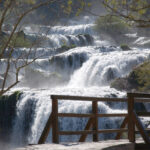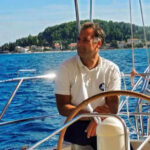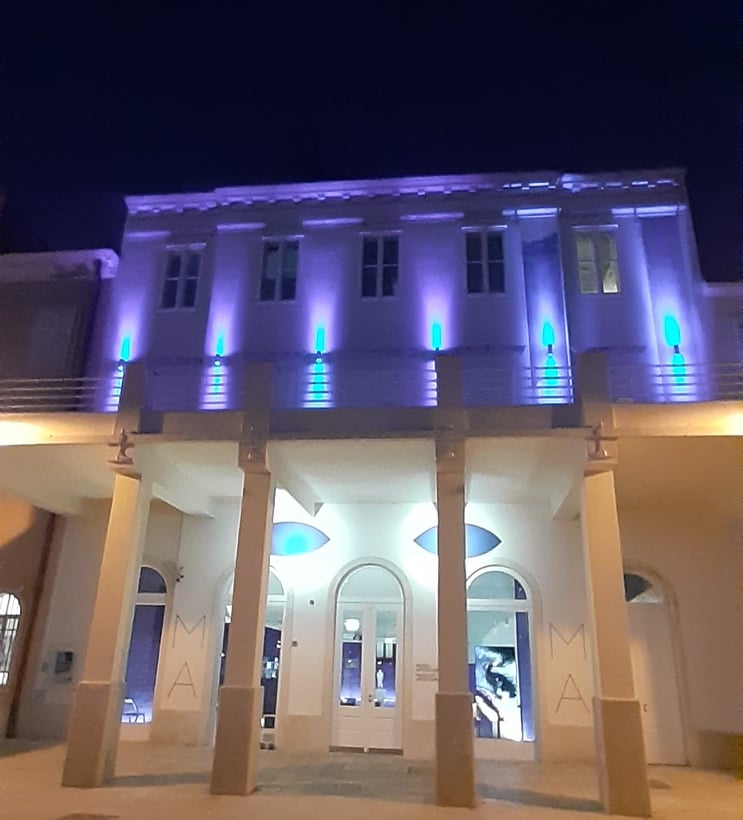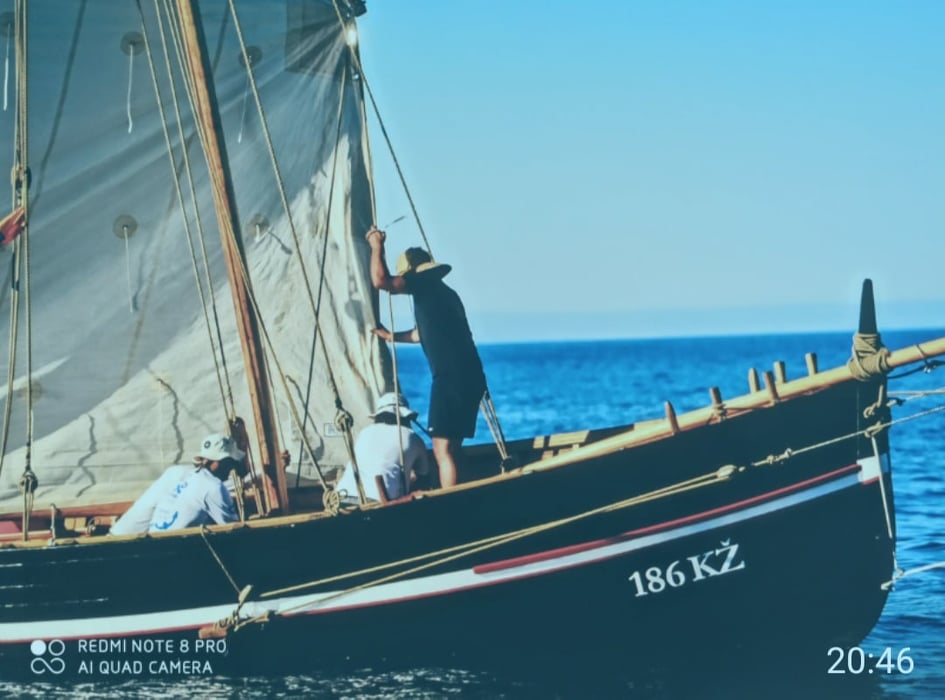
Best Krka Falls Magical Day Tour
March 1, 2023
A unique sailing experience departing Dubrovnik
February 24, 2024A surprise invitation to visit the islands of the Kvarner Coast, Lošinj, Cres and Krk, in the month of November 2020 was happily accepted! I had been dreaming about setting foot on these three Islands for a very long time, and finally, I was on my way, flying from Split to Island Krk, which is off-shore from the main city of Rijeka on the mainland. A very scenic flight all the way along the Dalmatian coast at low altitude was fantastic. Proudly I could name almost all the islands, but to be visiting unknown waters in the Kvarner Archipelago was exciting to be sure! BTW, the cost of the flight was 42 Euro!



Departing from Split Airport, the cutest small aircraft bound for Island Krk.
Arriving late afternoon to Krk Airport I was delighted to meet Neno, my guide and friend, brother of the well-known chef and identity on the Gold Coast, the late Tony (Luongo) Glavurti?. Tony was a very dear and close friend of our family, particularly of my late husband Branko and my boys Brando and Adrian. Meeting Neno transported me back in time, yet here we were embarking on a week of discovery and exploration. Neno and his sisters are residents in Rijeka. I was visiting their territory, and they were so welcoming and warm-hearted. Visiting a family friend, Gioi, I was so happy to see some Australian aboriginal art purchased on her visit to Australia many years ago with Neno!


With Gioi and Katica, in Rijeka.
Soon we were on our way, driving across islands Krk and Cres to the further-most island of Losinj. These three islands have a similar past. The ancient Greeks were here, followed by the Romans, Byzantines, the Venetians, Austro Hungarians, then back to the Venetians. By the time Venice fell in 1797 the Island of Lošinj had become an important maritime centre, while Cres was an important in wine and olive production and later in the 19th Cent a shipbuilding centre. In fact, on our first trip to Dalmatia in 1969, Branko and I sailed from Sydney to Genoa on the Italian ship Galileo Galilei, and the captain, Rudolfo ?angulin was from Mali Lošinj!


The harbour of Mali Lošinj
The Island of Lošinj in a nutshell….
The Towns of Mali Lošinj and Veli Lošinj attract a huge number of visitors in the summer, with the majority coming from Italy. The best months to visit are the European Spring and Autumn. The island is 31 km long with a well-indented coastline with lush plant life. The towns of Mali and Veli Lošinj are ringed with natural pines plus some Aleppo pines planted in the 19th Cent. Here you’ll find 1100 plant species and 230 medicinal herbs plus some exotic species like bananas, lemons, cedar, and eucalyptus brought here by the sea captains. There’s a protected area for a large dolphin population, the only one in the whole of the Mediterranean!


The Apoksimen Man, restored and housed in Kvarner Palace Mali Lošinj.
I was really keen to see the ancient Greek statue of Apoksimen, found on the sea-bed near Lošinj in 1999. A 2000-year-old bronze statue that is becoming known as the official icon of Lošinj. Meticulously restored it now has been placed in Mali Lošinj’s recently restored Kvarner Palace.
A lovely leafy destination, Mali Lošinj boasts both traditional and modern accommodation. Always well-known as a wellness centre by the wealthy of Vienna and Budapest of the 19th Century, many of these stately residences still remain and have been beautifully restored offering luxury accommodation. Here you’ll find many wonderful restaurants and bars.
Here In Mali Lošinj, I would recommend a visit to the Garden of fine Scents where you’ll find 250 indigenous plants and 100 exotics all beautifully growing in a setting of traditional stone walls……..
I can also recommend visiting the small islands nearby of Susak, with divine sandy beaches and a distinct dialect yet to build their stone houses each stone had to be carried by hand to the island from Mali Lošinj! Ilovik, known for its profusion of flowers, roses, oleanders, and eucalypts, and Unije, with its pebbled beaches and its one and only settlement of picturesque gabled stone houses.





In Osar at Konoba Bonifa?i? with Neno, the perfect Kvarner guide.
Time to visit Cres, separated from Lošinj by an 11mtr wide canal ! We drove across the bridge and there on the other side was the small village of Osar with a population of 42. We decided to stop, after all, it was time for lunch! Who knows what we might find! As we walked inside this tiny town we were absolutely amazed! Here we found the most amazing collection of bronze sculptures of famous musicians, including a work of art by Ivan Me?trovi?, Croatia’s most well-known sculptor and to our absolute delight we stumbled across a fabulous little restaurant, Konoba Bonifa?i?, tucked away in a secret garden setting by the sea. My fresh tuna steak on the grill was so succulent and delicious! Obviously many locals and visitors alike know about this place with a great reputation for fine food!
The Island of Cres stretches 68 km and is sparsely populated and much more underdeveloped than Lošinj. A fascinating place to visit abandoned hilltop towns, swim in hidden and private coves, savour delicious lamb dishes and generally chill out in nature.


On the hilltop town of Beli is the protected area of the Griffon Vulture. It’s possible to become a volunteer at the nature reserve. A unique volunteer holiday program is very well known and attended by environmentalists from all around the world.
Cres Town. Here we found old people chattering away in an Italian dialect. The old town of Mandra? with its pastel-colored houses and mansions from long ago hug the harbour lined with small fishing boats. The Italian influence dates back to the 15th century. I loved the ambiance of this old seaside town..
Only 14 km from Cres Town is the little hamlet of Valun. You can leave your car at the top and walk down steep steps to the old town by the sea. An amazing sight, a stunning shingle beach and a stone village clinging to a cliff… Definitely no touristy souvenir shops and only a few very traditional restaurants! (My style!)
Island Krk.
Neno wanted to show me something very special in the old town of Ba?ka. In the 1100-year-old Romanesque Catholic Church of St. Lucy at nearby Jurandvor, we found two major medieval Croatian artifacts: The Ba?ka Tablet, discovered in 1851 near the village, one of the first monuments containing an inscription in the Croatian Glagolithic scripts. Also, a checkerboard pattern carving on the bell tower is suspected to be one of the first instances of the Croatian Coat of Arms.



The Romanesque Catholic Church of St. Lucy at Jurandvor
The Frankopans of Island Krk. When I think about Island Krk, the name Frankopan conjures up a vision of Croatian-Hungarian kings, The Doge of Venice, and the Dukes of Krk, known as the Frankopan dynasty, playing games of chess with the winner taking yet another piece of land. The Frankopans became one of the richest and most powerful families in Croatia. One day I’d like to go on the Frankopan trail, exploring a string of castles stretching from Island Krk across to Lika, (Plitvice Lakes region) All so fascinating.
Earlier in the 11th Century, Krk became the centre for the Glagothithic language, the old Slavic language put into writing by the Greek missionaries Cyril and Methodius.





The Frankopan castle in the town of Krk..
What was supposed to be a 3-day visit to the Kvarner turned out to be a 6-day adventure discovering and visiting so many new sights, and learning a lot about the northern islands of Croatia. Thank you, Neno, Katica Sonja, and Gioi for your warm hospitality. So very much appreciated.
Time to Return home to Split, taking the 45-minute flight down the Dalmatian coastline on a very clear and sunny day, the coast of Italy was very visible, reminding me of hundreds of years of history, the trading route of Marco Polo, the Turkish Venetian battles at sea, and Napolean’s fleet fighting the British Royal Navy, the movement of people and interconnection of nations around the Mediterranean and Adriatic Seas. Let’s hope in this new world of tourism we are able to preserve our heritage and natural habitat of both man and his environment. – Robyn Vulinovich.






